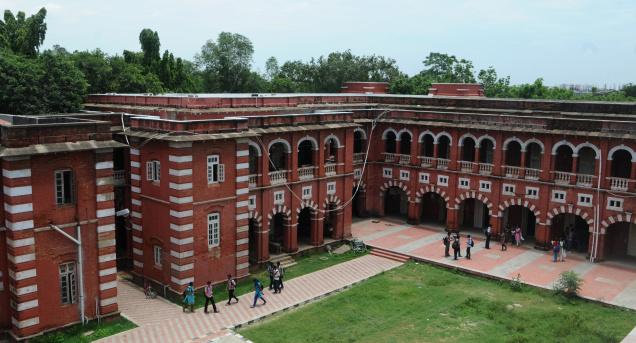
Unlike many heritage buildings in the city, the stately, yet functional arches and corridors of the college do not seem like an anachronism
Unlike many heritage buildings in the city, the stately, yet functional arches and corridors of the College of Engineering, Guindy do not seem like an anachronism. The rectangular scarlet structure of one of the country’s oldest technical institute effectively encases not just an architecturally fine courtyard and corridors, but also the evolution of technical education in the city.
On a brisk Monday morning, this busy institution, it seemed, had no time for nostalgia. Under the high ceilings, and arched passageways, students huddled in groups with books, and professors stood on pedestals in classrooms naturally lit by the spacious windows.
What started as a survey school with eight students in 1794 at Fort St. George, shifted to several campuses including Kalas Mahal in Chepauk before moving to its current premises on what is today the Anna University campus in 1920, according to ‘Glimpses of 200 years of history of the College of Engineering, Guindy’ by Er. C.S. Kuppuraj. Today, nearly 10,000, students study here, said dean, C. Chellappan. The original survey school became a civil engineering school, civil engineering college and an engineering college before becoming the College of Engineering, Guindy.
The active alumni of the college take heart in the fact that the main building still retains its heritage character. B. Karunakaran, secretary, Alumni Association, College of Engineering Guindy who passed out in 1969, said that as students, they loved the spacious campus. A lot of things have changed too, he noted. “For instance, there was only one girl in my batch. Now, of course the ratio has drastically changed,” he said.
Mr. Chellappan, said that maintaining the heritage nature of the building was a top priority and they planned to convert the clock tower into a heritage centre. “The college has a rich history and has produced notable alumni. We want to showcase the evolution of the college to the students,” he said.
82-year old N. T. Swaminathan, who passed out in 1955, said the clock tower was the main time-keeper for students. “Few wore watches and when we heard the bell toll, we rushed to class, which began at 7 am. Back then, there was a tennis court very close to the main building. As it was far away from the city, it used to be calm and green,” he recalled.
“The masonry arches, interspersed with stone and brick, are identical. Even with modern equipment, it would be difficult to construct something similar.,” said M. Sekar, former dean and president of the alumni association.
Chennai Central at The Hindu celebrates Madras Week
Follow us:
Microsite: http://thne.ws/madras-week
Facebook: www.facebook.com/chennaicentral
Twitter: www.twitter.com/chennaicentral
Hashtag: #madrasweek #madras374
Photos: www.thehindushutterbug.com
source: http://www.thehindu.com / The Hindu / Home> News> Cities> Chennai / by Asha Sridhar / Chennai – August 20th, 2013